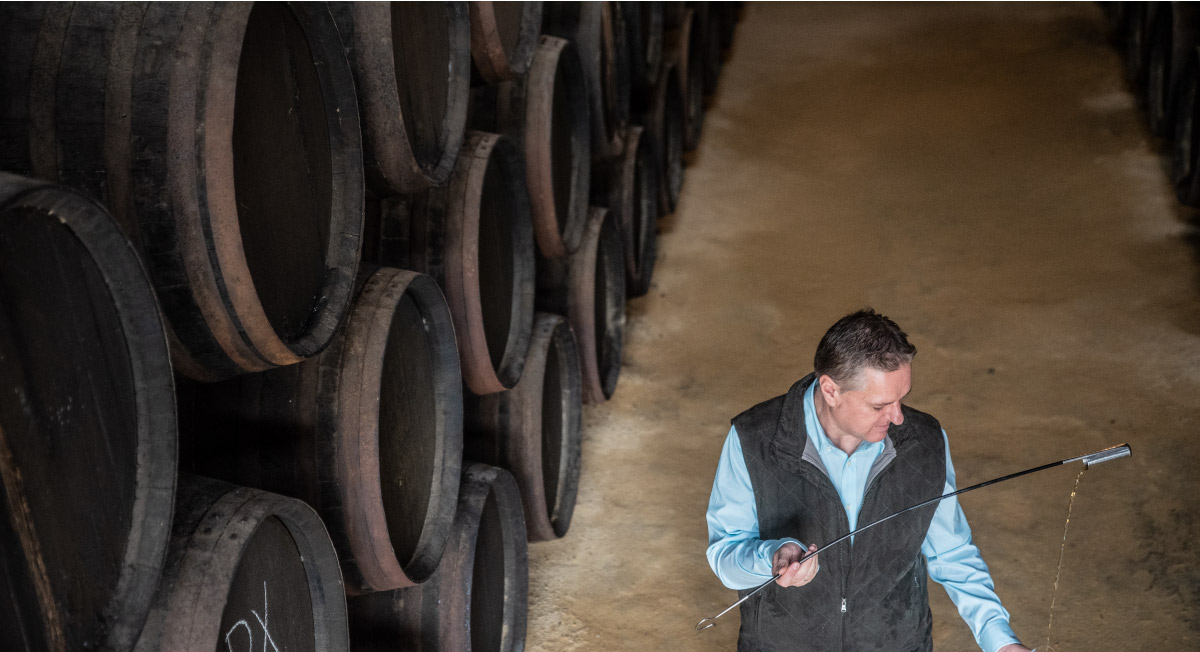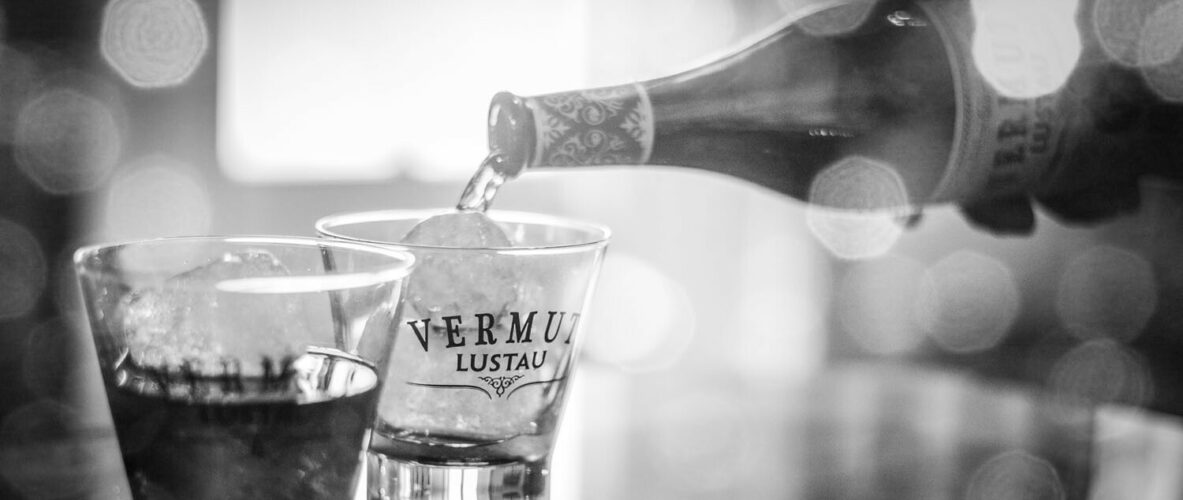It’s that time of year again, when the cold starts to break and warmer weather gradually begins to grace us with its presence.As the seasons change, we often seek out and welcome food and drink that reflects our surroundings.When things start to heat up, our desire for beverages that quench our thirst and cool us off grows exponentially with the increase in temperature.In a world filled with slushies and punches, there is one classic cocktail that has been helping us usher in Spring and Summer for centuries: Sangria
At first glance, combining biological diversity with sherry may seem quite forced or artificial. They are concepts very far from each other, of completely different magnitudes. The truth is that each corner of the world, no matter how small, has its own biodiversity, represented in unique ecosystems that host multiple forms of life that interact and sustain the same environment that shelters them. Jerez, a region located in the southwestern point of the Iberian Peninsula, is a clear example of great diversity throughout its biological spectrum, but is this diversity a differentiating factor for the region?
The wines of Jerez are characterized as being diverse, full of differences, not only between other wine regions in Spain, or the world but also within the limits of the same designation of origin. Jerez wines’ wide differentiation in colors, textures, aromas, and flavors is the union of a complex conjunction of environmental, biological, and human factors. Or put differently, the biodiversity of the Marco de Jerez is, therefore, a concise and tangible way to understand a much more abstract and broader concept, which is the diversity of the region.

Cadiz province is probably one of the most diverse regions of Spain in terms of biology, geology, and landscaping.
The production of each style of sherry requires the sum of several key elements, aligned, and coordinated in a determined time and manner. A wine as dry and fresh as manzanilla cannot be understood in the same way as a full-bodied, oxidative oloroso, or the latter, with a wine as silky and luscious as pedro ximénez. The differences among them can be even more specific. Finos made across the DO Jerez may all be distinct. Similarly, manzanilla, despite being made in the same way as fino wines, cannot be categorized as those wines made in Jerez de la Frontera, El Puerto de Santa María, or any other city or town in the region. In this area, biodiversity will play a fundamental role in understanding the extensive differences between fino-fino and fino-manzanilla, thanks to one of the smallest forms of life in the Jerez ecosystem: the “Flor” veil.
The presence or absence of this special and unique microorganism, and the way in which it interacts with the wine, will give rise to about 50% of the oenological diversity of the region, and the total number of produced dry styles known as fino and manzanilla (total and perennial presence of “Flor” during their aging periods), amontillado and palo cortado (partial and temporary presence of “Flor” during aging) and oloroso (total absence of “Flor” during aging).
WHAT IS VELO DE FLOR?
A few months ago, Lustau’s Capataz, Sergio Martínez, shared the results of a joint investigation with the microbiological department of the University of Cádiz on the formation of the “Flor” veil in the cities of Jerez de la Frontera and El Puerto de Santa Maria. The article, available on Sherry Journey (link al articulo en blog), delves into what the “Flor” really is, how it interacts, and what it contributes to those wines with which it has been in contact, as well as illustrating the requirements for this tiny form of life and how it becomes crucial to the production of these very unique styles of Jerez wines.

The beginning and ending for many sherry expressions.
Talking about “Flor” without talking about meso-climates or terroir could be considered building a house without having made the foundations first. The effect of different strains that make up this unusual layer of active yeasts can be pictured first locating on the map of the region such important aspects for biodiversity as climate and vineyards.
A CLOSER LOOK AT THE ROLE OF BIODIVERSITY IN THE SHERRY TRIANGLE
The three cities that make up the Jerez Triangle (Jerez de la Frontera, El Puerto de Santa María, and Sanlúcar de Barrameda) have clearly appreciable climatic characteristics. These differences represent an important contribution to the hypothesis of the “Flor” veil’s biodiversity. Each of the cities in this geographical triangle is in a perfectly identified climatic context, even within the general parameters of the region.
– Sanlúcar de Barrameda: Sanlúcar is located in the northwest corner of the region, with a purely coastal climate, and nestled in a large area known as the Atlantic Zone (Font Tullot). Sanlúcar, despite being in an area with a potentially higher rate of rainfall, is in fact, the city with the least amount of rain per square meter over the last 20 years (506 l/m2). However, being between the Atlantic Ocean and the Guadalquivir River gives it additional humidity levels greater than those found in Jerez de la Frontera, or El Puerto, which although lying next to a river, does not have it. This very particular location means that the average annual temperature is the lowest of the three (17.4ºC/ 63ºF) even though it is not the city with the lowest temperatures per season. Finally, in Sanlúcar the maritime winds of the west predominate, and the dry eastern winds have almost no influence.

– El Puerto de Santa María: El Puerto, unlike Sanlúcar, is found at the southwest vertex of the triangle. Although like Sanlúcar, it is located between the Atlantic and a river, although in this case, it is not the Guadalquivir, but the smaller Guadalete. This factor will make El Puerto de Santa María experience its own climatic conditions, despite being in the same climate as Sanlúcar (Atlantic zone climate). The rainfall in El Puerto is the highest of the three cities (598 l/m2). The influence of the Atlantic, however, is somewhat less than in Sanlúcar. Of the three cities, El Puerto has the most stable average temperature, with the least fluctuation throughout the year. But in addition to everything, El Puerto de Santa María is the city with the greatest influence of both the west and east winds, a case that mostly occurs there.

– Jerez de la Frontera: Jerez is an inland city, the only one that is not in direct contact with a river or a considerable body of water such as the Atlantic Ocean. As a result, its geographical location can be identified, as being on the border between an Atlantic and continental-attenuated climate (Font Tullot). Jerez, therefore, is the city with a moderate average rainfall over the last 20 years (545 l/m2). If Sanlúcar, El Puerto, and Jerez are compared here, great and influential differences will already be perceived in terms of levels of rainfall, and average humidity. The temperature is also very different since Jerez is the city with the highest average temperature in the summer (32.2ºC/ 90ºF), and the highest during the winter (17,9ºC/ 64ºF). Eastern (levante) winds can be found here in a much higher rate than southern or western winds, creating a direct contrast between Sanlúcar (strongly influenced by poniente (western winds) and El Puerto, that has an interesting rate based on a combination of both.

UNDERSTANDING MESOCLIMATES OF THE TRIANGLE THROUGH THE CLIMATE OF THE SHERRY REGION
As consequence, the Jerez region is very diverse in climatology and would require a detailed analysis due to the great orographic differentiation into which the area is divided (coast, countryside, and mountains), although a series of specific climatological factors can be identified that can help clarify the differences between the cities of Jerez, El Puerto, and Sanlúcar.
The region is located between two seas with different temperatures and characteristics (Atlantic and Mediterranean) and two different continents (Europe and Africa), being the entry corridor for stormy seasons and easterly windy seasons. The region presents a temperate thermal range, with rainfall events mainly in autumn and winter, and a marked summer dryness attenuated by the oceanic influence.

The combination of storms and clear skies plays a fundamental role, gaining strength and influence depending on the season of the year. The clear skies are much more present during summer, while the storms are predominant in spring and autumn.
The antagonistic winds from the west (poniente) and east (levante) are the most important in the region. The first is strong and is personified in short spells, being very influential in spring and early autumn. Levante, as its counterpart, is much more persistent and aggressive (being able to reach streaks of 10 days at average speeds between 50 km/h and 100 km/h).
THE HISTORY AND CULTURE OF BIOLOGICAL DIVERSITY IN SHERRY MAKING
If you have read the article about our Capataz’s research, you will know that biological aging is also closely linked to historical factors and that it was not until the 1970s that scientific studies began to delve into this unique yeast.
In this study, wines and veil of “flor” samples were taken from fifty-two Lustau barrels with wines of different ages and distributed in three different cellars from Lustau’s winemaking areas (Jerez de la Frontera and El Puerto de Santa María) and have been analyzed for two years. Some of the wine compounds most deeply involved in “Flor“ yeast metabolism were evaluated to consider the blending effect of this system. Then the veil of “flor” was analyzed by molecular methods, finding five more different species, this being the first time that the three last species (stated below) have been reported in the biological aging system.
Saccharomyces cerevisiae
Wickerhamomyces anomalus
Pichia membranaefaciens
Pichia kudriavzevii
Pichia manshurica
The vast majority of isolates belonged to the S. cerevisiae species. However, W. anomalus, P. membranaefaciens, P. kudriavzevii and P. manshurica were promptly found in some barrels during the second year of study.
Also, 9 different genotypes of the S. cerevisiae were also found, posing a new riddle for researchers, winemakers, and investigators. Wine compounds most deeply involved in the veil of flor yeast metabolism were also analyzed to consider these variables in the yeast diversity and dynamics of the Solera and Criadera systems.
Since the wines were produced from the same, single base wine, homogenized, and then distributed around the sherry triangle, we are facing revolutionary research that eventually will tell us how and why the “Flor” is responsible for having different styles of finos (and manzanillas in future research) within the region.
CELEBRATING DIVERSITY IN SHERRY PRODUCTION
Lustau is the main and only winery with a presence in the entire former triangle of Jerez, hosting the incredible wealth of microbiological biodiversity from aging under the “Flor” veil and being the only company with the largest representation of fino and manzanilla sherries in the entire appellation.
Lustau shows the expressiveness and diversity of the region, in all its forms (geological, climatic, and biological) and is portrayed by one of the most special ranges in the category: The 3 en Rama collection.
The 3 en Rama range is made up of a fino from Jerez de la Frontera, a manzanilla from Sanlúcar de Barrameda, and a fino from El Puerto de Santa María. Sergio Martínez carefully selects the most exceptional and expressive casks of each solera, each spring, to create this unique collection of wines.

This process takes place in spring, as this is the time of year when the flower veil is at its zenith.
These wines are bottled directly from the cask, without going through any additional treatment or filtering (en rama). In this way, the personality of these wines remains intact, reflecting the unique character and meso-climate of each of the cities in which they are grown and dedicating the greatest and most honest tribute to the biodiversity of the most important form of life in the DOs Jerez – Xérèz – Sherry and Manzanilla from Sanlúcar.

The inland climate of Jerez de la Frontera gives the wines a greater body and a rounder style. This fine wine, aged under a “Flor” veil for 4 years in American oak casks and bottled without any prior treatment, has been selected for its finesse and subtlety. Lustau 3 en Rama Fino de Jerez 2023 shows a golden color with amber reflections. Pungent and intense on the nose, with notes of fresh yeast, white bread, chalk, and butter. Complex, elegant, and saline. With a slightly bitter, mineral, and almond finish.

Located between the mouth of the Guadalquivir and the Atlantic, Sanlúcar de Barrameda has a microclimate that impregnates the surface of the veil of this manzanilla with a unique saline touch. This wine, selected for its delicacy, ages under a “Flor” layer in American oak casks for 5 years and is bottled without any treatment. Lustau 3 en Rama Manzanilla de Sanlúcar 2023 shows a lemon-yellow color with golden reflections. Fresh, salty, and sharp on the nose. Chamomile, fennel, and toasted almond intertwine with soy and herbaceous nuances. On the palate, it is light and saline, with a bitter and nutty finish.

The mild climate that El Puerto de Santa María enjoys throughout the year exerts a crucial influence on the development of iodized and light finos. The “Flor” develops under exceptional conditions here. Selected for its typicity and elegance, it ages for 5 years under a “Flor” veil in American oak casks and is bottled without any treatment. Lustau 3 en Rama Fino del Puerto 2023 shows an intense yellow color with golden reflections. Very sharp and lively, with notes reminiscent of the Atlantic breeze, toasted almonds, and hay. Very dry and salty on the palate. With a long and bitter finish, characteristic of the finos of El Puerto.
The region celebrates every spring the beginning of a new cycle. Just as flowers return to the fields, gardens, and squares, organic aging shows its most expressive side, giving rise to some of the driest and most special wines in the world.







